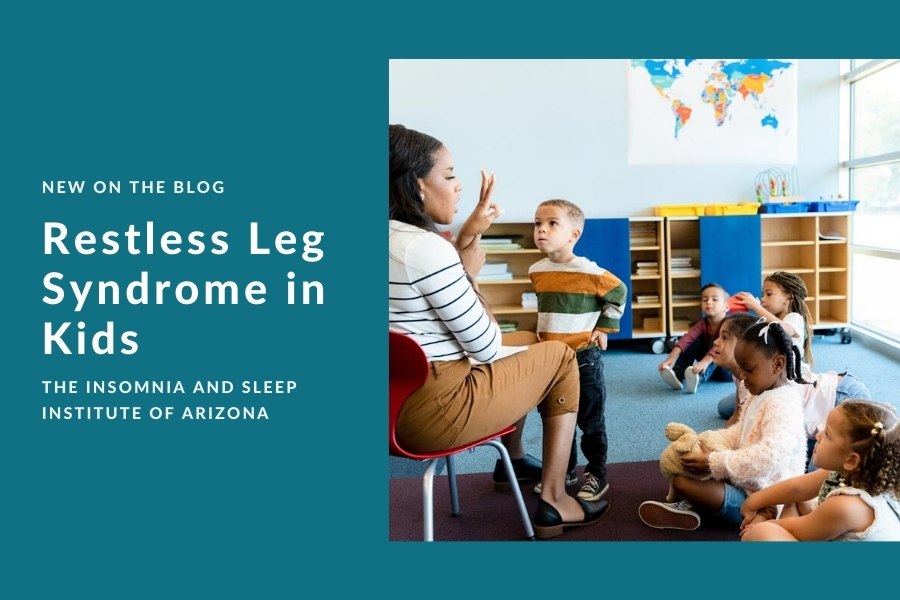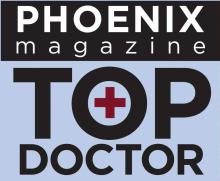“Can kids get restless leg syndrome?” It was a question posed by a parent to The Mayo Clinic in their “Dear Abby-esque” online site. The answer is yes, though it is less common in children than in adults (which can be said about a lot of sleep disorders). At The Insomnia and Sleep Institute of Arizona, we treat patients as young as two years old because sleep disorders can cause major issues in developing bodies and brains. We are home to the “Top Doc” in the area, as voted by sleep specialist peers, for the last six consecutive years. Triple board-certified Dr. Ruchir P. Patel staffs this outcome-driven clinic with sleep specialists and your very first consultation is with a sleep expert who can diagnose sleep disorders including restless leg syndrome (RLS).
According to the parent who wrote to The Mayo Clinic, her child moves a lot at night, does not fall asleep easily, and says it feels like there are “bugs” on her legs. The parent has RLS, which made them think that their child might have it, too. The answer from the Clinic was clear: “Just like adults, children can have sensations in their legs that makes it hard for them to fall or stay asleep. If the sensation happens regularly, they may have restless leg syndrome, which is considered a sleep disorder.”
Why RLS Happens
Also known as Willis Ekbom disease, RLS happens in about two percent of children. There is also a genetic link to it, so the parent was right in wondering it if was hereditary. However, anyone can develop RLS, which is one factor that can make it difficult to diagnose RLS unless you work with a sleep expert. RLS presents as an uncomfortable urge to move the legs. Similar to “bugs,” others call the feeling like a pulling, crawling, or burning sensation anywhere in the legs as well as the feet. It is common for kids to use words like “bugs” or spiders.
The natural way to relieve these symptoms is to get up and move or to stretch the legs. This, of course, is going to seriously disrupt someone’s ability to fall and stay asleep. The Mayo Clinic points out that children also can be having “growing pains,” which come and go, and this common feeling can be confused with RLS but there’s a key difference—growing pains don’t make a child feel like they have to move to get relief.
RLS symptoms usually start right after a person sits down or gets in bed. They can happen during the daytime, but are typically worse and more noticeable at night. Children might feel symptoms while in a classroom or in a car. Leg twitching while going to sleep, or hypnic jerks, are not RLS. These are normal happenings and do not need treatment as they should not seriously and routinely disrupt sleep. Muscle and ligament strains can also appear like RLS, but strains are eased by rest whereas RLS usually worsens when the body is kept still.
Help with RLS
In children, RLS often starts at around five or six years old. ADHD is a co-morbidity with RLS in around 30 percent of children. Oftentimes, an overnight sleep study is not necessary to diagnose a child with RLS, but rather a description of symptoms usually suffices. RLS in itself cannot be treated, but the symptoms can. A change in sleep hygiene such as adding a warm bath before bed, stretching, and restricting certain foods are all common ways to help reduce RLS symptoms in children.
There may also be a deficiency that leads to RLS, such as low iron levels. There are currently no FDA-approved medications for treating RLS in children, but working with a sleep specialist to identify the disorder (if appropriate) and create a lifestyle change plan is the best way to help your child get the rest they need. If you think your child (or you) has RLS, help is available. Sleep is critical for all, but especially children who need enough quality sleep for proper growth and development. Contact The Insomnia and Sleep Institute to schedule your consultation by calling the office or completing the online form for the quickest response.





